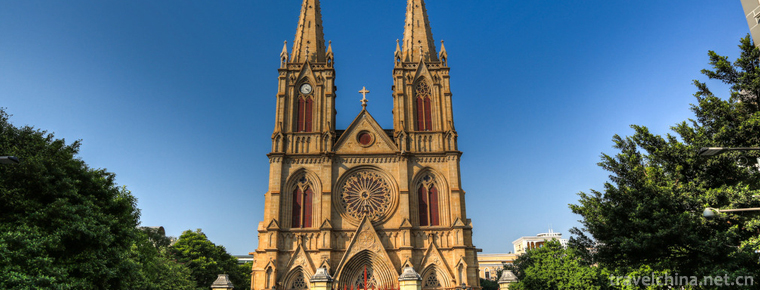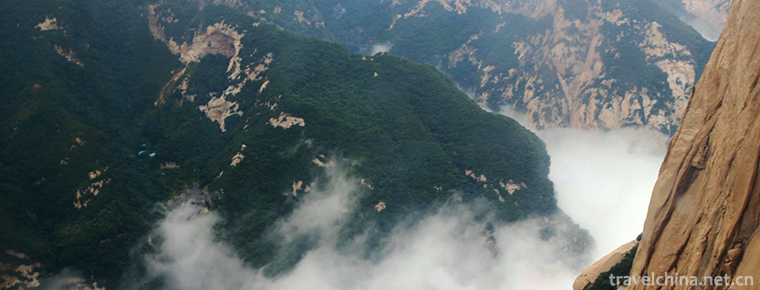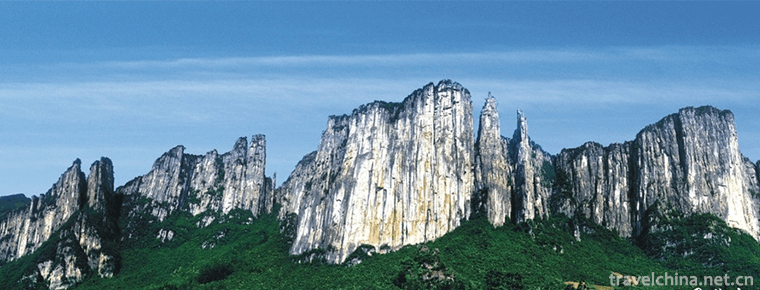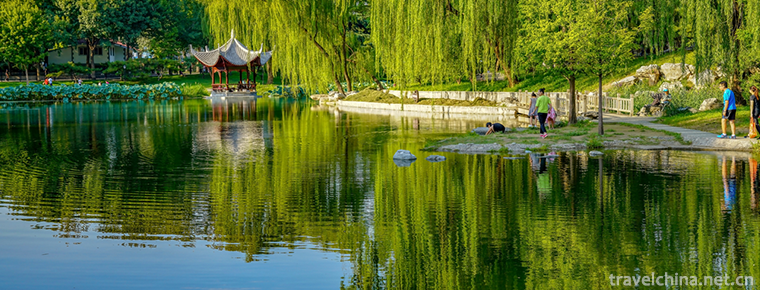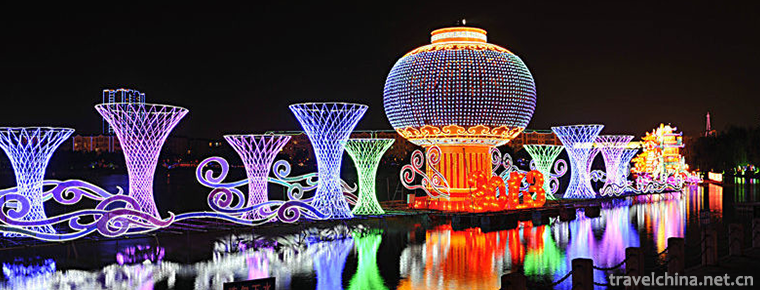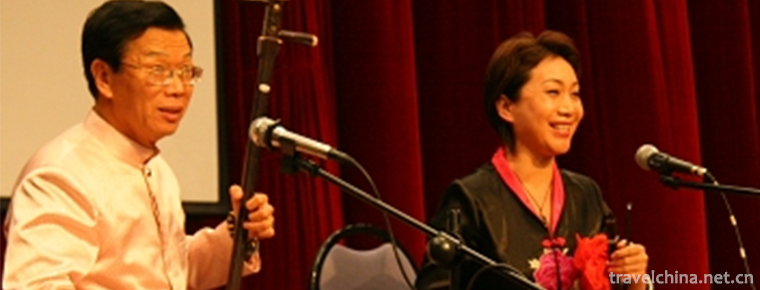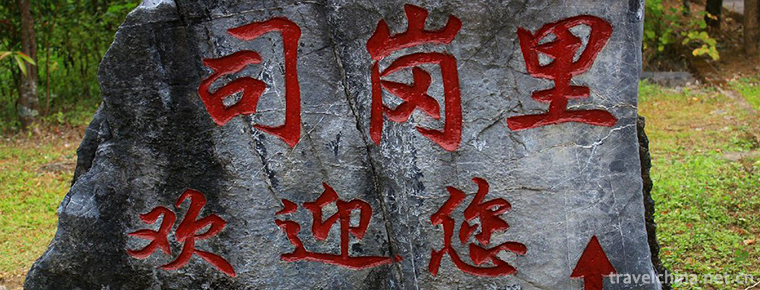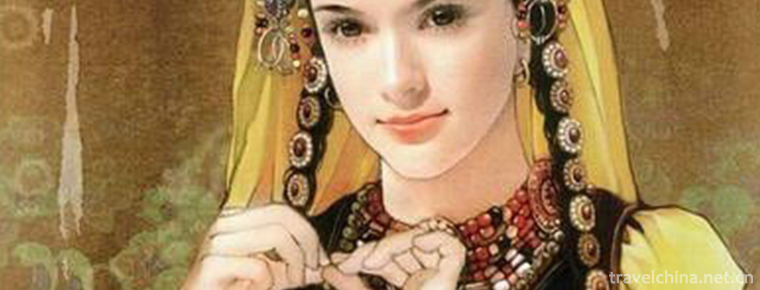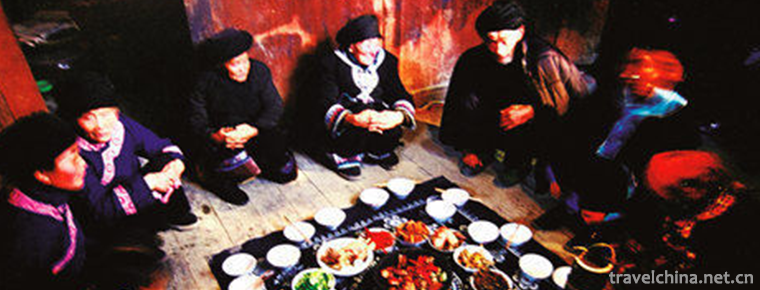Silk Weaving Techniques
Silk Weaving Techniques
Silk weaving is a traditional Chinese handicraft with a long history. It consists of four parts: Yuhang Qingshui silk sponge production technology, Hangluo weaving technology, Shuanglin silk weaving technology and Lu silk weaving technology. Hangluo has a long history, which has been recorded in local chronicles of the Song Dynasty at the latest. Hangluo's loom has undergone several changes, but it still maintains a large number of handicraft skills in its production process, exquisite and meticulous, highly demanding, due to the complexity of the process, there have been not many people. According to repeated investigations and demonstrations by relevant parties, so far, only one Fuxing Silk Mill has survived in Hangzhou, and H1226 Hangluo can still be produced. It belongs to the world-class intangible cultural heritage.
On June 7, 2008, silk weaving technology was approved by the State Council and listed in the second batch of national intangible cultural heritage list.
In 2009, it was listed by UNESCO in the List of Representatives of Human Intangible Cultural Heritage. In 2012, Zhou Kangming was listed by the Ministry of Culture as the national successor of silk weaving technology (Shuanglin silk weaving technology). In November 2014, Lusilk weaving technology was listed in the fourth batch of silk weaving technology expansion projects on the national intangible cultural heritage list.
historical origin
Chinese working people have a long history of making silk floss, which can be traced back to the Zhou Dynasty at the earliest; in the Tang Dynasty, Zhejiang silk floss was listed as a tribute; from the Song Dynasty, the silk floss upgraded in Zhejiang accounted for more than two-thirds of the national upgrade. According to the records of Xianchun Gong Fu Zhi, "Qiantang, Renhe, Yuhang, Linan, Fuyang..." Jiuxian Jiemian... Today Yuhang is the best place to go. In the Qing Dynasty, Yuhang Silk Mian was well-known overseas. During Kangxi period, it was exported to Japan. During the Republic of China, Yuhang Qingshuimian won the first prize at the first West Lake Exposition held in Hangzhou.
It is difficult to verify when the origin of silk thread was. However, from the material objects handed down from generation to generation, as early as between the Han and Wei dynasties in China. It is known as the living fossil of Chinese silk fabrics, also known as silk carving, is an ancient plain textile. It uses shuttle instead of pen, dyes silk thread and weaves according to the original pattern. Because the production depends on manual operation, a silk product can be finished in a few months or several years. Therefore, it is known as "one inch of silk and one inch of gold".
There is a beautiful legend about the birth of Yunjin in Nanjing. The seventh day of the seventh lunar month is the seventh day of the seventh lunar month. It is said that since the Southern Dynasty, women have to set up tables, display melons and fruits, and beg the weaver girl crossing the river for skill in brocade weaving. Nanjing women's begging is especially popular. Zhinu overlooked the world on the flyover and fell in love with the lush Zijin Mountain and the beautiful Qinhuai River in the capital city of the Six Dynasties, as well as the hard-working and simple people of Jiankang (now Nanjing). So she and Niulang came to the world and set up a loom beside the beautiful Qinhuai River. She handled the technology of weaving Yunjin. Nanjing girls and young men who have been taught skills by Weaver girls and cowherds, weave brocades that are really graceful and luxurious, with a variety of styles and brilliant clouds. From then on, the artists of cloud brocade all call the weaver girl "Yun Jinniang", and the brocade weaved here is praised as "Nanjing Yun Brocade".
The superior natural environment gave birth to Yunjin in Nanjing. Located in the middle and lower reaches of the Yangtze River, Nanjing is situated in the subtropical hilly basin, surrounded by mountains on three sides, facing water on one side, with mild climate and humid air. Annual precipitation is about 1100 feet, annual average humidity is 15.2 C, and dry humidity is about 70%. This provides excellent conditions for the growth of mulberry trees. Since ancient times, it has been the main source of mulberry silk. The ancient Qinhuai River flowed into Nanjing from a source a hundred miles away and meandered ten miles through the city. Therefore, it is called the Ten-Mile Qinhuai River. Along the banks of the Qinhuai River, there are many dyeing shops and machine rooms. This special geographical and climatic environment is very favorable for the weaving of Yunjin brocade, which makes the mulberry silk wool and not easy to break its head.
Qinhuai River water and vegetable dyes make Nanjing Yunjin beautiful. The unique water quality of Qinhuai River in Nanjing provides a good condition for the dyeing of brocade materials. The water of Qinhuai River contains tannic acid with an acidity of 7.1 degrees. It can play a natural catalytic role in dyeing and make the dyed silk fabrics lustrous and moist. Nanjing Yunjin used natural dyes from the Southern and Northern Dynasties to the Ming and Qing Dynasties. Most of them are plant dyes, especially plant dyes, which are basically from Nanjing real estate. So far, many place names in Nanjing are still closely related to Yunjin dyeing and dyes.
History and Culture: Nanjing Yunjin embodies the unique royal culture and auspicious culture.
Royal Culture: During the Yuan, Ming and Qing Dynasties, Nanjing Yunjin reached its peak and became a royal article.
Auspicious Culture: The pattern of Yunjin in Nanjing is almost "intentional and auspicious", which gathers the essence of excellent Chinese auspicious culture and reflects people's ideological desire for happiness and enthusiasm.
In the long process of development, Nanjing Yunjin has formed many varieties. Dazhi can be divided into four categories: Kusatin, Kujin, Kujin and makeup. Among them, make-up satin is the most complex variety of weaving technology in Yunjin, and also the most representative Jacquard Silk Variety with Nanjing local characteristics. The weaving of Nanjing Yunjin cosmetics Satin has to go through more than 120 processes. Nanjing Yunjin woodworking machine makeup and hand-weaving techniques were successfully selected into the list of representative works of human intangible culture on September 30, 2009.
In December 2004, the State Administration of Quality Supervision and Inspection granted the title of "Nanjing Yunjin" products of origin (now renamed as geographical indication products); in April 2007, the State Administration of Industry and Commerce approved the certification trademark of "Nanjing Yunjin"; in October 2008, with the approval of the State Administration of Quality Supervision and Inspection and the State Standard Committee, the national standard of "Geographical Indication Products Yunjin" was formally implemented, and in December 2011, the "Comprehensive National Standard Committee No. 66 approved the establishment of the national standard of Yunjin cosmetics satin, which guaranteed the intellectual property rights of Yunjin and the purity of its products.
Production conditions
In addition to his unique production skills, silk sponge also has an important condition, that is, to have good water quality. The silk floss produced in Yuhang is called "clear water silk floss". It can be seen that the water quality is closely related to the quality of silk floss.
Tongji Bridge, a thousand-year-old bridge across Nanqi River in Yuhang Town, has withstood thousands of floods and remained motionless. This is certainly related to the ingenious design of the diversion angle and spillway tunnel of the bridge. But one thing little known is that there are long and thick slabs of bluestone under the bridge that can make the floods vent quickly.
In the Qing Dynasty, a businessman surnamed Su had a unique eye and was deeply familiar with the principle of "clear water on stone". He believed that the conditions for refined silk floss in Yuhang were unique. So he opened a silk floss workshop near the bridge. The silk floss produced by him was outstanding in the industry and won a prize at the Nanyang Exhortation Conference.
Technological process
According to the old people who have been engaged in silk sponge production, there are seven main processes in making clear water silk sponge: first, cocoon selection, double Palace cocoon, macular cocoon and other large cocoons; second, cocoon boiling, cocoon boiling with gauze bag, put into a large pot, each bag contains about 1-2 kg, adding 2 tbsps of old alkali and fragrant oil, adding water to cocoon noodles, boiling in a strong fire without stopping and turning, boiling for about an hour, until the silk glue is dissolved. Unfold and loosen the cocoon layer and start the pot when there is no raw material; 3) rinse the boiled cocoon with clean water, rinse it while treading, and squeeze out the alkali water and pupa oil in the cocoon; 4) peel the cocoon into a "small pocket" and put the ripe cocoon into cold water, then peel it off and pull it out, then put it in your hands, generally three or four cocoons to make a "small cotton pocket"; 5) pull the big cocoon to support the cocoon surface, and make a "small cotton pocket". Stretch the "small cotton pocket" onto the cotton expansion, pull the edge evenly, knock out the raw pieces, pick up the attachments, and support it into a "big cotton pocket" with even thickness and no impurities; six is to roll off the big cotton pocket and connect it with a string; seven is to dry, hang the "big cotton pocket" on the bamboo pole, and then dry it into silk. Generally, a kilogram of silk cocoon needs about 3 kilograms of dry cocoon, and it takes more than an hour to make a "small cotton pocket" by hand from a kilogram of cocoon.
Hangzhou-Luoyang Weaving Techniques
Declaration unit
Hangzhou Fuxing Silk Factory
Hang Luo common sense
Luo, is one of the representative varieties of Chinese silk "silk satin".
Hangluo, together with Susatin and Yunjin, is listed as three famous silk products in southeastern China. Hangzhou Luo is originally from Hangzhou, so it is named Hangzhou Luo. It consists of pure mulberry silk with plain weave and yarn organization. The straight or horizontal yarn holes with equidistant regularity on the Silk Mask have clear holes and smooth texture. Comfortable, cool, durable and washable. They are mostly used as curtains, summer shirts, casual clothing fabrics, etc.
historical origin
Hangluo has a long history, which has been recorded in local chronicles of the Song Dynasty at the latest. The Qing Dynasty became one of the most famous silk varieties in Hangzhou. Hangluo's loom has undergone several changes, but it still maintains a large number of handicraft skills in its production process, exquisite and meticulous, highly demanding, due to the complexity of the process, there have been not many people. According to repeated investigations and demonstrations by relevant parties, so far, only one Fuxing Silk Mill has survived in Hangzhou, and H1226 Hangluo can still be produced.
Historically, Hangzhou was the main place of origin of Hangzhou, especially in the area outside the gate of Lunshanmen. Qing Liying's "Miscellaneous Records of East City" said: "Hangzhou East City, the voice of opportunity is heard by every household." It can be seen that in the Yongzheng period of the Qing Dynasty, such a pattern had been formed.
Luo's production can be traced back to the Spring and Autumn Period and the Warring States Period. The silk fabrics produced by Yue during the Spring and Autumn Period were "Luo" in the seventeenth volume of Jiatai Huiji Zhi, Bu Silk. Volume 8 of Wang Jia's Collection of Remnants in the Eastern Jin Dynasty records Mrs. Zhao, wife of Sun Quan of Wu, who is known as "Three Wonders" (Machine, Needle, Silk), "Weaving into Luo, month after month, cutting into curtains, which are seen both inside and outside, fluttering like smoke and light work, while the room cools itself". It can be seen that the "Luo" at that time has been regarded as the best product, and the weaving skills are very high.
In the Southern Song Dynasty, Hangzhou and Luozhou had emerged in silk production. "Xianchun Linan Zhi" Volume 8 "Silk Products" contains: "Luo: There are flowers, vegetable two kinds of Jieluo, dyers and weavers are familiar with the thread Luo, especially expensive." Luo in Song Dynasty has been found in recent years, which shows the level of production skills in that year. Hangluo production, since the beginning of the Southern Song Dynasty, continued in Yuan, Ming and Qing dynasties. According to Hangzhou Chronicle, "Luo" has always been a major variety of Hangzhou silk in the Yuan, Ming and Qing dynasties.
Making process
Tipping warp swaying soaking water looming
Main characteristics
1. The main characteristics of Hangzhou-Luoyang are its exquisite and exquisite manufacturing techniques and skillful workmanship.
2. In terms of historical inheritance, Hangzhou and Luozhou have a long history, which can be traced back at least to the Song Dynasty (Luo's history can be traced back to the Spring and Autumn Period and the Warring States Period).
3. Up to now, the scarcity of Hangzhou-Luoyang weaving technology has also become a major feature of it. Only one silk factory in Hangzhou has preserved the traditional weaving skills of "Hangzhou Luo", which is both surprising and worrying, thus arousing widespread concern.
Important value
1. Hangluo has economic value and practical value. Although the output of this rare variety of silk has decreased sharply in recent years, it still has a certain market. Several old silk brands in China have been distributing in Hangzhou and Hangzhou in Fuxing Silk Mill, and their evaluation is very high. Ding Guigen, head of Qian Taixiang Silk Store in Suzhou, said that many elderly people like to wear Hangluo clothes, especially breathable, comfortable, cool, can not afford prickles and wear well. Manager Wang of Beijing Ruichixiang Silk Shop said that Hangluo has sold fire here. Some Chinese elderly people like it very much. Even the foreign Prime minister's wife will purchased it at home and make Chinese clothes with Hangluo.
2. Hangzhou-Luoyang weaving technology has precious academic value in the history of science and technology. "Cihai" interprets the word "Luo" and calls it "the name of silk fabrics" and "Hangluo, for example". It can be seen that the academic circles usually regard "Hangluo" as the representative variety of "Luo". The Chinese Silk Museum invited experts to visit the Fuxing Silk Mill. Zhou, curator of the museum, also printed a statement: "Hangzhou Fuxing Silk Mill still produces H1226 Hangzhou by traditional craftsmanship. It is the only manufacturer in Hangzhou with exquisite technology and excellent quality. In order to keep it from being lost, the government departments are advised to take implementation measures and give protection and support." The value of the techniques mastered by the "Hangluo" inheritors in the history of silk science and technology can be seen from this.
Endangered situation
"Hangluo" has been inherited until now, under the strong impact of chemical fiber fabrics, gradually shrinking. Most of the original manufacturers have stopped production, and their descendants are generally old and have died one after another. Within the scope of Hangzhou, there is only one silk factory in Fuxing, Hangzhou, which is still insisting on producing "Hangzhou Luo", and its operation is very difficult. The original quality of the factory is over 80 years old. It is the director of the factory, Junguanxing, who can still participate in the production.
In August 2005, the factory was notified of land requisition and had to relocate. The Hangluo loom used in this factory is composed of wood and metal parts. It is not easy to disassemble and assemble. To this end, the factory submitted written reports to the Hangzhou Municipal Government and the Jianggan District Government requesting protection. Hangzhou's major media have also reported this matter, calling for attention from all sides.
Application for protection
Wang Guoping, Secretary of the Hangzhou Municipal Party Committee, twice issued instructions calling for the protection of "Hangzhou Luo" to be included in the work of promoting the Silk House, so as to let the masses know about Hangzhou Luo and let Hangzhou Luo sing around the world. With the help and support of Zhejiang Provincial Committee, Hangzhou Municipal Committee and Jianggan District Committee, Hangluo weaving technology has been listed in Hangzhou, Zhejiang and national intangible cultural heritage lists. In 2008, Tongyun Brocade and Shu Brocade have declared world oral and intangible cultural heritage as "China's sericulture and silk weaving" projects. In 2013, Shao Guanxing was awarded the provincial representative inheritor of Hangzhou-Luozhou weaving skills by Zhejiang Provincial Culture Department.
Shuanglin silk weaving technique
Declared area
Nanxun District, Huzhou City, Zhejiang Province
historical origin
Shuanglin silk production has a long history. According to the determination of carbonized silk found in the Neolithic site of Qianshan, Shuanglin silk production has a history of more than 4,700 years.
Process type
"Flowers are silks, plains are silks." Shuanglin silk has exquisite traditional handicraft skills and various kinds. It can be divided into Geng silk, alum silk, flower silk, plain silk and many other varieties. The production process is strict, including soaking, turning silk, warp, releasing silk, weaving, refining and dyeing, polishing and finishing. Shuanglin silk is known for its lightness like cicada wings, thinness like morning mist, soft texture and bright color. It is known as the flower of silk weaving technology. In 1994, the "Hangong Brand" flowers produced by Shuanglin Qian Silk Mill were awarded the Gold Prize of the 5th Asia-Pacific Expo and the high-quality products of Zhejiang Province. Silk yarn has a wide range of uses, in addition to painting and calligraphy mounting, but also applied to arts and crafts, decorative arts and so on.
Shuanglin silk has exquisite traditional handicraft and various kinds, which can be divided into Geng silk, alum silk, flower silk, plain silk and many other varieties. The production process is strict, mainly including soaking, threading, warping, loosening, weaving, dyeing, polishing, finishing and other large and small processes of more than 20.
Silk becomes rich
It is the late autumn silkworm cocoon gathering season when the frost falls and the season is over. In Fengrui Village, Fengrui Village, Dongqiao Town, located in the Northwest Mountainous Area of Fuyang City, silkworm farmers have inherited hundreds of years of skills and are busy making silk quilts in clear water according to their orders.
According to Qing Guangxu's Fuyang County Chronicle, "Although Fuchun is near the Yangtze River, people do not take fish and salt as their industry, men work hard and women work hard in silkworm weaving." Dongqiao Town is the main cocoon producing area of Fuyang. The town has more than 5800 Mu mulberry garden. In the most years, more than 10,000 silkworm eggs have been reared, and the cocoon yield accounts for half of Fuyang. At the end of 1980s, the natural village of Qupu in Fengrui Village, Dongqiao Town, was selected as the silkworm breeding base by Hangzhou Silkworm Breeding Farm. Every year, three silkworms were reared per household. The silkworm economy has become the main source of income for hundreds of farmers in Xiaoshan Village.
In Fuyang, only the calamus silkworm farmers can make clear water silk quilts by hand. According to Yuan Xuekui, the village's seventy-year-old man, there are seven main processes for making clear water silk quilts: the first step is to select cocoons and select high-quality double-palace cocoons as raw materials; the second step is to boil cocoons with unique recipes to remove odors, strictly control the temperature and time of boiling cocoons, avoid high temperature boiling silk pupa, resulting in unclean silk; the third step is to rinse the boiled cocoons and soak them in clean water. In fact, it is a degreasing process. The cleaner the sericin is removed, the better the quality of silk and cotton is, the harder the silk quilt is to be stiffened; the fourth step is cocoon stripping, cocoon stripping with nails, silkworm chrysalis taken out, cocoon stretching and loosening bandage in hand, when it is stacked to 5-6 layers, silk slices are taken down and gently pulled into square ones, which become wet silk and cotton pockets; the fifth step is cotton drying and hanging wet silk and cotton pockets. On the bamboo pole, take it to the sun and dry it; on the bamboo tube, stretch the silk and cotton that is dried into silk blocks with an area of about 2 square meters. This must be done with ingenuity, according to the demand of density, not strong or weak, not hasty or slow, pull into soft silk floss which is as thin as paper and as clear as jade; the seventh step is to turn over the quilt and fold the soft silk floss layer by layer to make the quilt core (a quilt weighing 4 kg needs to fold about 200 pieces of square silk), and then put the quilt core into the quilt cover, seam positioning, so as to ensure that the silk quilt will not slip and deform. 。 In this way, a silk quilt was successfully completed.
For a long time, the fabrication techniques of calamus clear-water silk quilt have been handed down orally and heart-to-heart, and silk-cotton fabrication relies on personal understanding and long-term practical experience. In addition to the unique production techniques, silk cotton also has an important condition, that is, to have good water quality, calamus mountain spring is clear, so the rinsed silk cotton color is white, feel smooth, good elasticity.
"Acorus calamus hand-made clear-water silk from cocoon selection to sewing all manual operation, and without bleaching, without any chemical composition, to ensure the original natural characteristics of silk." Officials in Dongqiao Town said that although silk quilts cost a lot, ranging from 1,000 yuan to 1,800 yuan per bed, because they are comfortable to cover, even customers in Heilongjiang, Inner Mongolia and Shanghai are booked online. To protect this ancient skill, the town is planning to declare intangible cultural heritage projects.
Silk characteristics
The replica weighs 49.5 grams. If the heavy edges of the cuffs and collars are removed, the weight of the "suit" is only about 25 grams. It can even be folded into a matchbox.
A 13-year-old replica of Western Han Dynasty plain yarn suede
Throwing shuttles and beating latitudes thousands of times, neon clothes began. As an outstanding representative of the world intangible cultural heritage, Nanjing Yunjin has a history of 1600 years. It is famous for its splendor, beauty like the clouds in the sky, and the reputation of "inch brocade and inch gold".
After four months of closure and renovation, the new Nanjing Yunjin Museum opened to the public again free of charge yesterday with a brand-new appearance. More than 100 pieces of brocade objects and historical materials, more than 10 brocade looms and historical sand tables of brocade were added to the upgrade and transformation, including the Western Han Dynasty plain yarn suede clothes (replicas).
Huang Yong, reporter of Jiangnan Times
More than ten brocade looms have been brought to Xinguan
The World Expo will showcase new technologies
In the past 1600 years, Yunjin has witnessed the vicissitudes of dynasties from generation to generation, witnessing the rise and fall of events. There are countless moving stories behind Yunjin.
Compared with the old museum, the new museum is divided into preface hall, long history, Tiangong weaving, glorious reflection of the world and other parts, focusing on the production and display of Yunjin Dahua Lou Wood Loom, as well as the reproduction of silk cultural relics of past dynasties and the display of various patterns of Yunjin cosmetics, which spans from Warring States to Ming and Qing Dynasties to modern times. The reproduction of the national treasure-grade cultural relic plain yarn and clothing, as well as the 10-meter-long and large Yunjin work "Nine Side Pictures (Part)", which imitated the border map of the Ming Dynasty, respectively, depicted the construction of nine border towns, mountains, rivers, sanctuaries, barriers, sidewalls and other contents, and the ancient Ryukyu King Yunjin dragon gown, which had never been shown before, made its debut. More than ten brocade looms were brought to show the weaving skills of "Tiangong". The librarians and several volunteers from Nanjing University dressed up as ancient Yun Jinniang to perform the loom dance on the spot - "Adding Flowers to the Brocade".
Li Xin, the office of Nanjing Yunjin Museum, introduced that all the interior designs of the new museum come from historical books, with "Canruo Yunxia" and royal culture as the main line of design. He revealed that the Cloud Brocade and Ming City Wall will also appear mysteriously at the forthcoming Milan World Expo in Nanjing Week. The Cloud Brocade Research Institute will continue to work with Lawrence Xu, a famous fashion designer, to present a Cloud Brocade fashion show in Milan. "In addition, there will be an alternative work showing the new weaving technology of Nanjing Yunjin Brocade and its relationship with the Maritime Silk Road. But it still needs to be kept secret.
Exquisite technology
The Song brocade produced in Suzhou has fine weaving and elegant artistic style. It has the traditional style and characteristics since the Song Dynasty. It is obviously different from the glossy brocade and satin made-up which were popular in the Yuan and Ming Dynasties. There are many processes in the production of traditional Song brocade, from silk reeling and dyeing to weaving products. The basic feature of the product is that it adopts the structure of the warp and weft joint flower display and the unique technology of color change by color throwing, which enriches the surface color lines and organization levels of the fabric. This technical feature was absorbed by the later Yunjin brocade, and has been spread to the contemporary brocade technology.
In terms of artistic style, it takes changing geometry as its skeleton, fills in natural flowers, auspicious patterns and so on, and matches them with harmonious and contrasting colors to make them bright but not vulgar, simple and elegant .
Inheritance significance
The Special Exhibition of Silk Memory-Silk Weaving and Embroidery and National Inmaterial Cultural Heritage Project, co-sponsored by the Department of Inmaterial Cultural Heritage of the Ministry of Culture, the National Library and the Silk Museum of China, was held in the National Library. Many visitors admire the name of "silk" here to listen to stories, learn art, explore history, seek culture, and the traditional skills of silk.
Silk culture has a long history. According to statistics, there are 77 items related to silk weaving and embroidery in China's national intangible cultural heritage list. In the aspect of sericulture, it includes the production technology and custom of sericulture in Hangjiahu area, especially the technology of making silk quilt of Qingshui silk. In the aspect of silk weaving, it is a variety of weaving technology represented by Song brocade, silk reeling, Shuan brocade, Shuanglin silk reeling and Hangluo silk reeling. China's silk weaving technology has also become a worldwide intangible cultural heritage. To inherit and carry forward the traditional silk technology is not only to protect the inheritance of the Millennium civilization, but also to develop the modern silk industry.
Song Jin, one of the three famous brocades, and Qingshui Silk Floss, which has long been famous, look at how to better inherit and develop traditional silk skills from the aspects of history and handicraft.

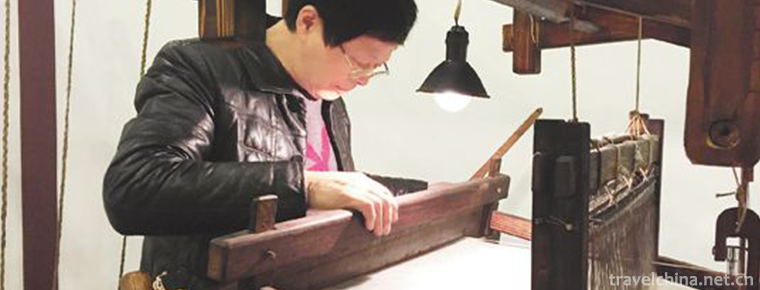
-
Shishi Sacred Heart Cathedral
Guangzhou Shishi Sacred Heart Cathedral is located in Yide Road.
Views: 150 Time 2018-10-12 -
Mount Hua
Mount Hua, known as "Xiyue" and "Taihua Mountain" in ancient times, is one of the five famous mountains in China and the birthplace of Chinese civilization.
Views: 340 Time 2018-10-30 -
Enshi Grand Canyon
Enshi Grand Canyon is located in Tunpu Township and Banqiao Township, Enshi City, Hubei Province. It is located at the junction of Hunan, Chongqing and Hubei provinces. It is the most beautiful sectio.
Views: 157 Time 2018-12-12 -
Blue Moon Bay Hot Spring Resort
Lanyuewan Hot Spring Resort is the largest four-star garden-style foreign-related hotel and national AAAA-level tourist scenic spot in Western Guangdong. It is located in the quiet "Guangzhou Bay.
Views: 183 Time 2019-01-29 -
Taoranting Park
Taoranting Park, located on the northwest side of Taoranqiao in the South Second Ring of Beijing, is a new modern urban garden, which integrates ancient and modern gardening arts and focuses on highli.
Views: 130 Time 2019-02-13 -
Exhibit of lanterns
The Lantern Festival is an ancient folk culture in China. It generally refers to the large-scale lighting exhibition held by the government around the Spring Festival and the Lantern Festival.
Views: 165 Time 2019-04-26 -
Shandong Qinshu
Shandong Qinshu is one of the traditional folk art varieties in Shandong area, also known as "Xiaoqu", "Yangqin", "Shandong Yangqin", "improved Qinshu" and so o.
Views: 186 Time 2019-06-13 -
Sigangli
Lincang City is located in the southwest of Yunnan Province, which is adjacent to the west, southwest of Yunnan and Myanmar. It has jurisdiction over one district, four counties and three autonomous c.
Views: 137 Time 2019-06-16 -
Tajik costumes
Tajik costume refers to the costume with distinct ethnic characteristics of Tajik. Tajik people mainly live in the Pamir Plateau with cold climate. Their economic life is mainly animal husbandry and a.
Views: 313 Time 2019-06-17 -
Tujia Year
Tujia Year is an important and ancient festival of Tujia people in Xiangxi Tujia and Miao Autonomous Prefecture of Hunan Province. During the thousands of years of historical development, some relativ.
Views: 164 Time 2019-06-23 -
Luzhou scenic spots
Luzhou has a long history, profound cultural accumulation, strong ethnic customs and rich tourism resources, forming five characteristic tourism resources represented by famous wine culture, ecological culture, red culture, historical culture and Yangtze River culture. By the end of 2016.
Views: 354 Time 2020-12-14 -
Meishan mineral resources
There are 25 kinds of minerals in Meishan, mainly including coal, natural gas, iron, copper, lead, zinc, manganese, placer gold, glauberite, gypsum, bentonite, phosphorus, dolomite, cement limestone, magnesite, granite for facing, vein quartz, crystal, quartz sandstone,.
Views: 261 Time 2020-12-18
